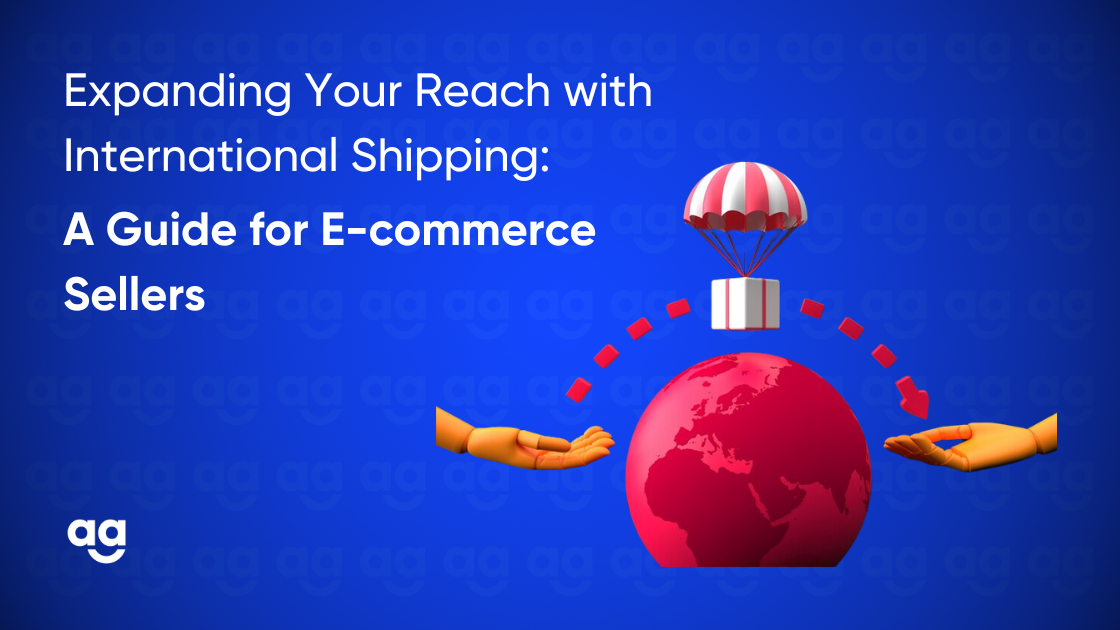Introduction
If you’re thinking about selling and shipping internationally, you have to ensure you’re thoroughly prepared. To begin with, you need to understand the complexities and nuances of global commerce.
Additionally, make sure you familiarize yourself with international shipping regulations and optimize your logistics to streamline the process.
Read on as we discuss a step-by-step process to start shipping internationally in 2024. Each step is carefully crafted to guide you through the intricate journey of expanding your business globally.
Steps to Follow to Start Shipping Internationally
Although reaching international clients can expand your customer niche, the entire process of cross-border shipment can appear complicated.
To reduce your work and streamline your shipping journey, follow the steps mentioned below before shipping your first international order:
Step 1: Start Small and Build on It
Since you’re new to international shipping logistics, it’s safe to begin shipping out only a few products from your merchandise.
Begin with countries that offer simple international shipping laws. This way, you’ll manage your first batch of shipments without cross-border issues. Also, using international marketing websites to test your product demands will prepare you for further operational logistics.
Step 2: Optimize Your Website for Better User Experience
When an international user browses your website, the buyer should be able to read in their language and see the product price in their currency. This simple tactic helps enhance the customer’s website engagement.
Consider adding disclaimers of overheard charges or special discounts for international shipping to keep the website optimal. This way, you create a more inclusive and user-friendly experience for your international customers.
Step 3: Research Your Target Market
For your product to succeed in any domestic or cross-border market, you must research the current trends and customer patterns.
You can analyze customer patterns and in-demand products by accessing data insights from your e-commerce website. This process gives you a heads-up on what sells in an international market.
Step 4: Inform Your Customers Beforehand
Before your customers hit the payment button, your website must inform them of specifics regarding the purchase.
For example, the webpage must display shipment overhead charges, return parcel logistics, time frame, tracking links for shipment, and documents needed at customs. Maintaining a transparent system on your website enhances the brand image and helps international customers trust your services.
Step 5: Don’t Lose Customers on Sloppy Packaging
You never know if your shipment hits severe weather conditions, gets mismanaged, or isn’t packaged carefully.
Eventually, no customer would want a damaged parcel, and the complications of cross-border return parcels. For building up great customer satisfaction and reviews, even the choice of material packaging matters.
So, make sure to invest in sturdy and secure packaging materials that can withstand the rigors of international shipping.
Precautions to Take to Ensure a Smooth International Shipping Experience
As reports point out, cross-border e-commerce is on a massive rise.
But before jumping on the bandwagon, consider the following tips to ensure a successful foray into cross-border e-commerce:Adapt your website and marketing materials to the local language and culture. This includes product descriptions, images, and even the layout of your website. A localized approach enhances the user experience and trust.
Clearly communicate product prices, shipping costs, and any additional fees. Avoid hidden charges to build trust with customers. Consider providing pricing in local currencies for a seamless shopping experience.
Choose reputable logistics partners with a strong global network. Ensure reliable shipping options, accurate tracking, and timely deliveries. Reliable logistics contribute significantly to customer satisfaction.
Understand and comply with the customs regulations of each country. Prepare accurate customs documentation to prevent delays in customs clearance. Clearly communicate any necessary information to customers.
Wrapping Up
With the help of a responsible logistics partner, your products can shine in the international market. Before finalizing any agreements, make sure you check the reliability and global reach of potential logistics partners.
Partner with Shipyaari as your logistics ally to experience seamless international shipping without the constraints of minimum order commitments.
Try Shipyaari for free now!







 Shipping
Shipping







